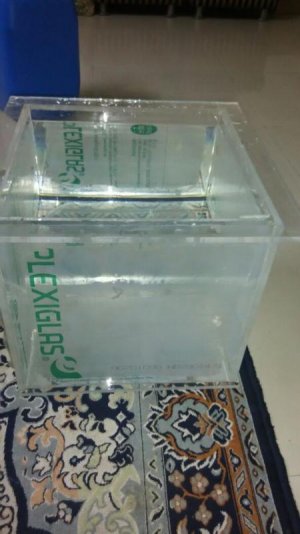1) make sure your right-angle bracket is actually 90 degrees
2) clean bonding surfaces with denatured alcohol on a clean cotton cloth (like an old white t-shirt, they make bags of rags out of this material) EDIT: and blow off with compressed or canned air, and don't touch these surfaces again (with fingers or anything that would make them not clean)
3) attach your vertical panel to the right-angle bracket with both pieces fit together in their "final" position (i.e. where they will be once the pins are pulled).
Uptill 3) everything is great
4) at this point, do any shimming needed to tighten up the joint (into it's "final" position)
Shimming is only required beneath the pins? or can be random
5) now, insert the pins, shim additionally if needed (should be very minor at this point) and blow out the joint with canned air
The pins or rather say the wire i use is 0.45 mm or 0.01771654", it bends when i insert so i have to lift the panel up and place them. James had mentioned to loosen up the clamps when you insert those wires manually rather then pushing them in. Actually im quiet confused, loosing the clamps would loose the 90 deg angle on the pane.
6) run solvent
Finally im being able to do it better.
Cant thank ya'll much enough!
7) pull pins after the soak time
By the time i finish my run its almost 15 sec, and the solvent dries up. I think might be the humidity that is playing its part. I have to get ethleye chemical that james had mentioned to slow down the cure rate. I'll get it for my next build
8) make sure the joint is aligned at the ends
Yep
9) once the joint is starting to firm up (after about a minute or so) then momentarily loosen the clamps while very gently applying pressure to the top edge (pushing down on the joint, essentially). Gently, as in don't smash it together, you just don't want the vertical panel to move/fall sideways, let the weight of the panel do the work (that's all you need)
After gluing up both the ends,pulling up the last pin on the second end panel and waiting for a few seconds. I put mdf planks on top of both the panes and added weight.
10) maybe add a small weight to the horizontal part of the 90 degree bracket
Before running the solvent or after that?
What the last couple steps do is allow the top piece to settle in a bit, as a very tiny fraction of (micrometers) of material is dissolved, and you want to close this tiny gap to prevent air intrusion along the joint (it's like the extra 1% towards perfection). It also prevent the 90 degree bracket from "suspending" the vertical panel up and allowing the gap to form, in the case where you made a goof on one of the setup steps, etc...you won't get much more squish-out when loosening the clamps, or rather, you shouldn't
Regarding the last pin pulling thing, yes that is totally expected. Pulling the last pin will result in final settling of the joint and this is where you see the squish-out. The syrupy stuff is dissolved acrylic from both sides (which creates the micrometer-gap that you account for my loosening the clamps)
HTH
Bud
What i felt was i didnt get any squish out.
Read the quote.
Last edited:

